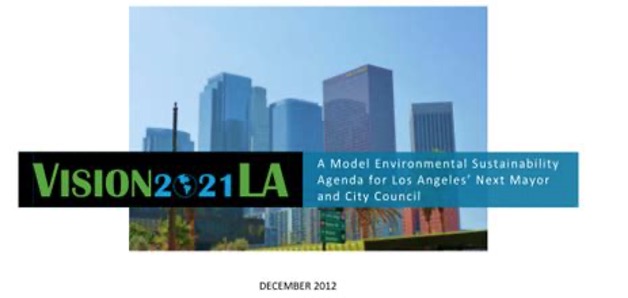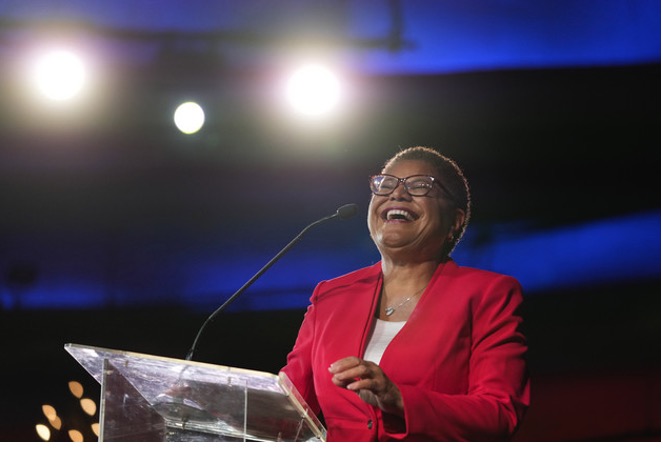CommentsPLANNING WATCH - While I wait for the phone to ring, I have several modest proposals to share with LA’s Mayor-elect, Karen Bass, and the reconstituted City Council.
My focus is what I have investigated for previous Planning Watch columns, the causes and cures for the housing and climate crises. These crises appear to be unrelated, but they share the same cause: private sector pursuit of highly profitable business deals, oblivious to their long-term consequences.
The housing crisis: LA’s housing crisis is not new. According to a recent UCLA study, it dates back to the 1930s, with antecedents going in the 1880s. In these earlier crises, the causes were identifiable, but the cures were blocked by politics, not lame excuses like “human nature” or “there’s just not enough money.” There are plenty of solutions to the housing crisis that would allow the U.S. to rival the successes of Finland, Japan, Denmark, and Austria, four countries that have eliminated homelessness. In addition to macro changes, especially the restoration of HUD and CRA public housing programs, the new Mayor and City Council can pursue these local solutions to homelessness:
- Wages should increase to catch up with the cost of housing. In Los Angeles, a renter needs to make $39/hour to afford a typical apartment. In LA the minimum wage is $16/hour, and average wage is $24/hour. Until this gap is narrowed, about three-quarters of Los Angeles renters will remain rent-burdened. To keep a roof over their head, they must pay more than 30 percent of their income for housing. Even worse, nearly half of renters in LA pay over 50 percent of their incomes for rent and utilities.
- Existing low-priced housing must be preserved, not demolished to make way for new, upscale real estate projects in lieu of the evicted tenants. Part of the solution will depend on the new Mayor, backed-up by the City Council, to heavily lobby for the defeat of California’s Costa-Hawkins law. Until voters rescind it, this law prevents Los Angeles from adopting a stronger rent-control ordinance. Once voters finally repeal Costa-Hawkins, Los Angeles can eliminate vacancy decontrol and replace the existing 1978 cut-off date for Rent Stabilized (RSO) apartments with a 1995 deadline.
- Density bonus ordinances, such as the Transit Oriented Communities Guidelines, must be scaled back to reduce the demolitions of existing low-priced housing and the construction of new, unaffordable apartments that the homeless and over-crowded cannot afford.
- The enforcement of LA’s Home Sharing ordinance, intended to expand the supply of low-priced rental housing, must be moved from the Department of City Planning to the Housing and the Building and Safety Departments. This change would prevent these rental units from being used by tourists instead of Angelinos in desperate need of low-priced housing.
- Corporate investment in houses and apartments must be curtailed to stop the steady increase in housing prices and rents. In Los Angeles, the best study to document these trends, including remedies, such as a vacancy tax, is The Vacancy Report: How Los Angeles Leaves Homes Empty and People Unhoused.
- The City Council must adopt a verifiable inclusionary zoning ordinance. It would require all new apartment buildings to include a specified percentage of inspected low-income units. Glendale’s inclusionary zoning ordinance offers an excellent model for Los Angeles.
The climate crisis: It is time for the City of Los Angeles to take the climate crisis seriously, an issue that was conspicuously absent from the recent campaign. Other cities and counties, like Seattle/King County, Washington, have adopted climate change plans that could be adapted to Los Angeles as a new General Plan Element. Furthermore, the California Governor’s Office of Research and Planning has prepared detailed guidelines for the new, mandatory Environmental Justice General Plan element, as well as an optional Climate Change General Plan element that focuses on the reduction of Green House Gases.

The effectiveness of these General Plan elements relies on careful monitoring. Their policies and programs, however, were spelled out a decade ago in UCLA’s Vision 2021 LA – A Model Environmental Sustainability Agenda for Los Angeles’ Next Mayor and City Council.
These decade old recommendations are still valid and fall into 11 categories:
- Energy & Climate
- Climate Change Preparedness
- Green Buildings
- Transportation
- Air Quality
- Environmental Justice
- Waste
- Water
- Open Space & Urban Greening
- Green Economy
- System
While this document has languished since 2012, its contents could have been written yesterday. These are my only additions:
- Instead of slowly losing its tree canopy, Los Angeles needs to aggressively plant and maintain its urban forest, with a focus on California natives on both public rights-of-way and private parcels.
- LA’s mild climate makes it an ideal city for walking and biking, but this will require ADA curb cuts on all corners, citywide reconstruction of the city’s decrepit sidewalks and crosswalks, and bicycle and scooter lanes on the city’s streets.
- To chip away at LA car dependency, mass transit must become an appealing alternative. This requires Kansas City type fare elimination, shorter bus headways, shelters at all stops, and accurate phone apps. Furthermore, mass transit stations must include first-last mile public improvements: extensive landscaping; upgraded sidewalks and lighting; street furniture; wayfaring signs; sheltered waiting areas; parking areas for cars and bicycles: and on-site interfaces for cars, taxis, busses, bicycles, scooters, and pedestrians.
- The reduction of Green House Gas emissions will not be easy. It depends on a distributed electric grid based on rooftop photo-voltaic panels, not just centralized solar and wind electrical generating facilities in nearby deserts.
The proposals above are hardly original. There are working versions for all of them in other cities, and they could be readily applied to Los Angeles. For this to happen, however, City Hall must overcome political, not technical barriers.
(Dick Platkin is a former Los Angeles city planner who reports on local planning issues for CityWatchLA. He serves on the board of United Neighborhoods for Los Angeles (UN4LA). Previous Planning Watch columns are available at the CityWatchLA archives. Please send comments and corrections to rhplatkin@gmail.com .)
















